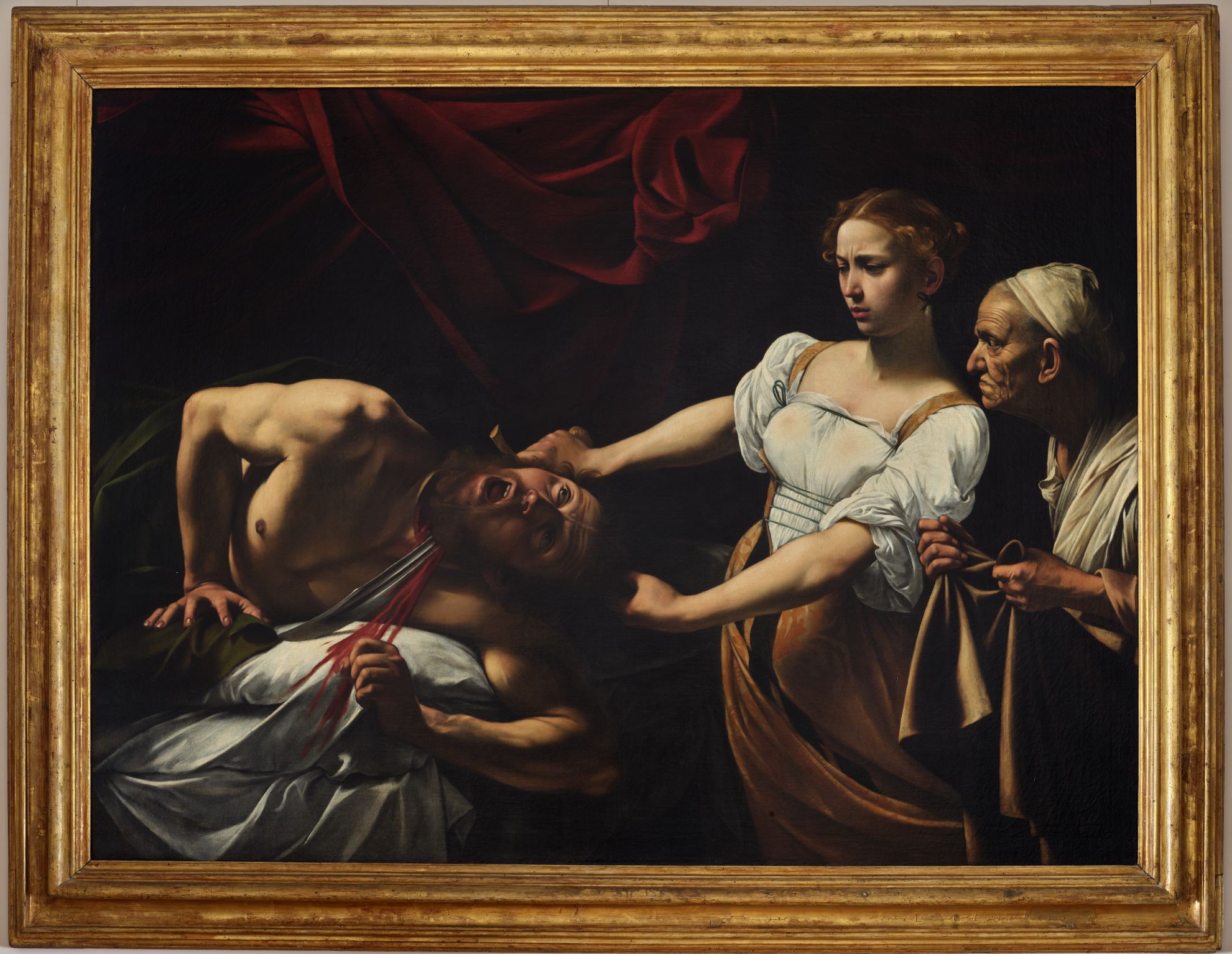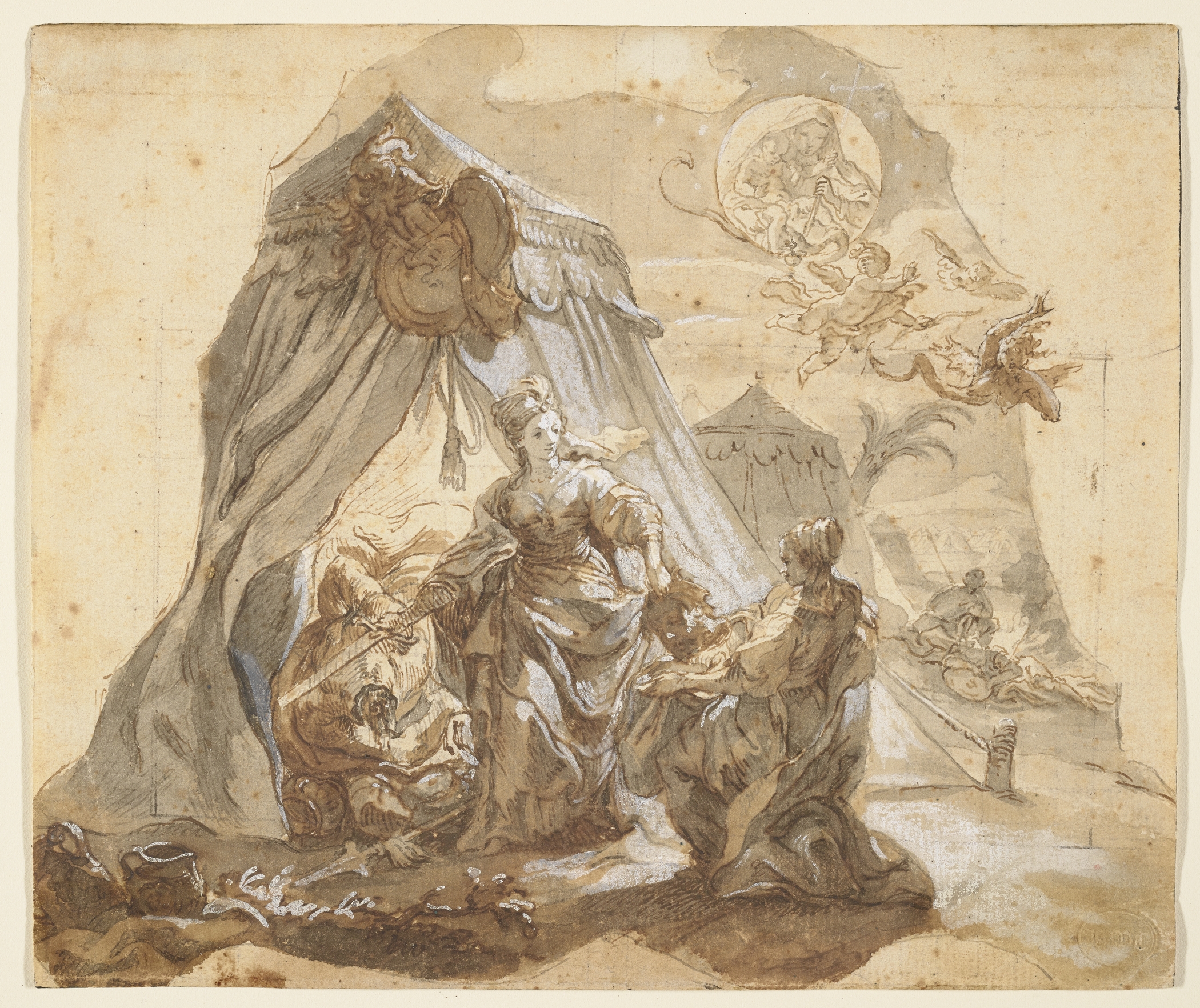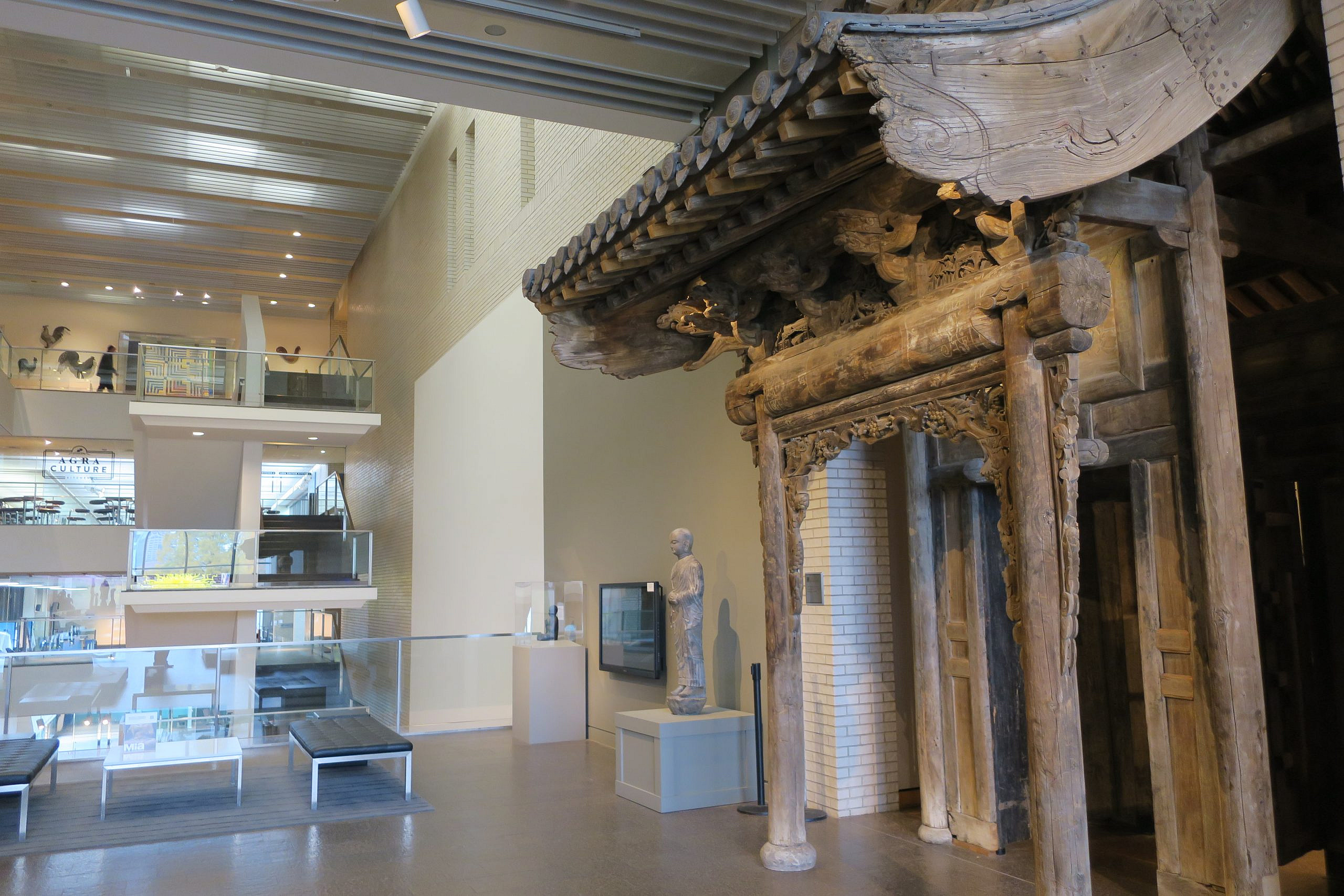There is no way around the goriness of Caravaggio’s “Judith and Holofernes,” which the Italian artist painted around 1599. The Chanukah heroine (almost a dead ringer for Scarlett Johansson) is midway through chopping the Assyrian general’s head off, and his blood has started to stain his bedsheet. Above, deep crimson curtains hint at much more blood to come, and Caravaggio even thought to have Judith tug at the general’s hair as she relieves him of his head.
The canvas was a key work in the development of the young Caravaggio, then 28 years old, Rachel McGarry, curator of European paintings and works on paper at the Minneapolis Institute of Art, told JNS.
“He was on the brink of becoming one of the most eminent painters in Rome, on the eve of his major public commissions in the city,” including at churches San Luigi dei Francesi, Santa Maria del Popolo and Sant’Agostino from 1599 to 1604, McGarry said.
“In the ‘Judith and Holofernes’ painting, we see the artist introduce the revolutionary style of painting that would propel him to success,” McGarry added. “It is here that he devises the formula for exciting action and spot-lit figures in the foreground against a dark background.”
Chiaroscuro—contrasting strong darks and lights, which Dutch master Rembrandt would revolutionize decades later—animates Caravaggio’s figures, according to McGarry.
“It is incredibly powerful in person. When you stand before the painting, you feel like the murder is happening right before your eyes,” she said.
The picture, which comes to Minneapolis from Rome’s Palazzo Barberini, is the centerpiece of a recently opened, focused exhibit at the Minneapolis Institute of Art “Caravaggio’s Judith and Holofernes,” which is on view until Aug. 20. The Caravaggio, and the 14 works on the same theme that accompany it, span some 500 years.
The brush is bloodied by the sword
The story of Judith (Yehudit) is not canonized in Jewish scripture, but rabbinic writings refer to it, as in reference to the custom to eat cheese on Chanukah to commemorate the milk with which Judith used to put Holofernes to sleep before slaying him.

There is no reason to think Caravaggio was at all familiar with rabbinic writings, but he could well have connected with the story on a different personal level. According to McGarry, he was not just a painter who knew how to suspend disbelief and to calibrate and translate his imagination onto canvas to capture the scene of the Jewish heroine beheading the Assyrian general.
“It is hard not to read Caravaggio’s tumultuous life and tendency to solve problems with a sword into this extraordinary picture,” she said.
Traditionally, artists have represented everything but the gory beheading: the banquet that preceded the violence, the moment Judith raises her sword or her triumphant return with the head of the enemy, according to McGarry.
“Caravaggio, instead, focused on the grisly act of the decapitation. His young, beautiful heroine undertakes her task tentatively. Her uncertainty and youth underscore in a novel way her heroism and bravery,” she said. “Caravaggio doesn’t sugarcoat the gruesome business of murder. It is ghastly work, which he knows all too well. He had been in his share of knife fights and duels and killed at least one man.”

On May 28, 1606, Caravaggio killed one Ranuccio Tomassoni in a duel—then illegal, so this constituted murder—and there were also indications that he had killed a policeman years earlier.
The other works from the museum’s collection in the show, by artists without murderous reputations, reflect how “artists have long been attracted to the tale of Judith, who used courage and guile to vanquish the Assyrian army and save the Israelites,” according to McGarry.
“It symbolizes triumph over tyranny, virtue over vice, good over evil and the good fortune of God’s faithful,” she explained. “The formidable Holofernes, undefeated on the battlefield, is undone by underestimating women. In Judith, he faced the embodiment of bravery, wisdom, resourcefulness and feminine power.”

“As the works in this exhibition demonstrate, she is a virtuous beauty, a dangerous temptress and a courageous hero,” she added.
The Caravaggio painting was last in the United States 40 years ago, in 1985, for the Metropolitan Museum of Art exhibit “The Age of Caravaggio” in New York. Just seven of Caravaggio’s paintings are in the collections of U.S. museums, according to McGarry.
“They are all wonderful, but none embodies the dramatic action and pathos of feeling presented here. These qualities, and his forcefully modeled, vividly naturalistic figures, are what made the painter famous,” she said.
The painting came to Minneapolis through a loan exchange, wherein the Minnesota museum sent Nicholas Poussin’s 1627 painting “Death of Germanicus” to Italy.

























